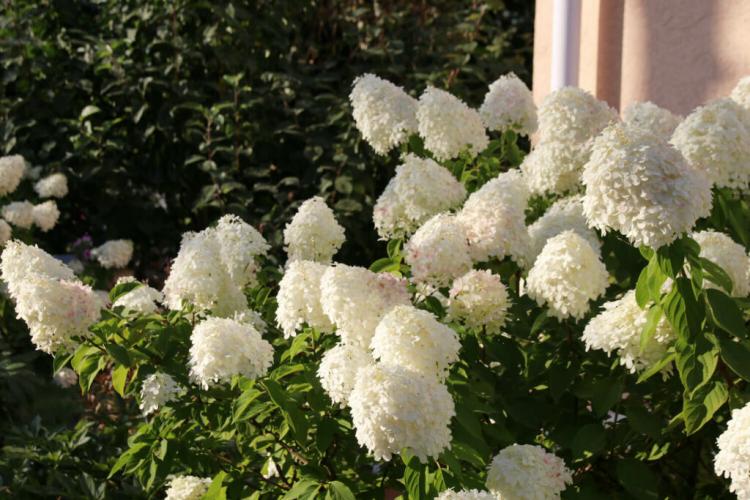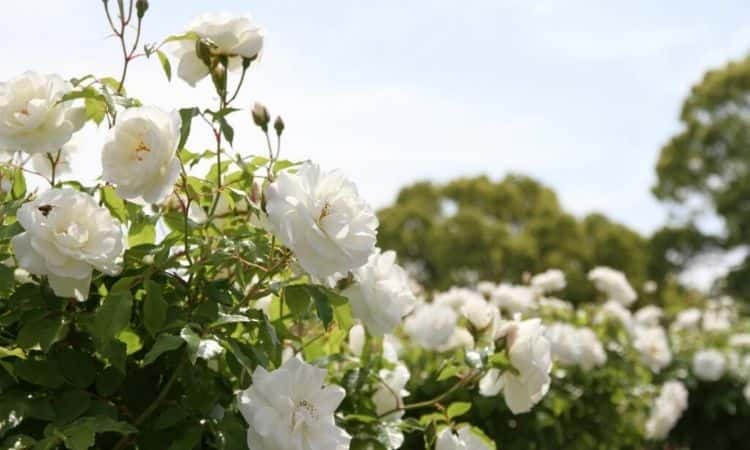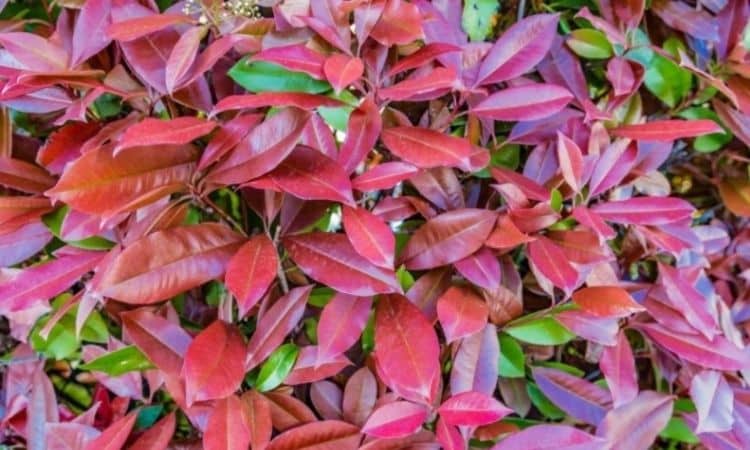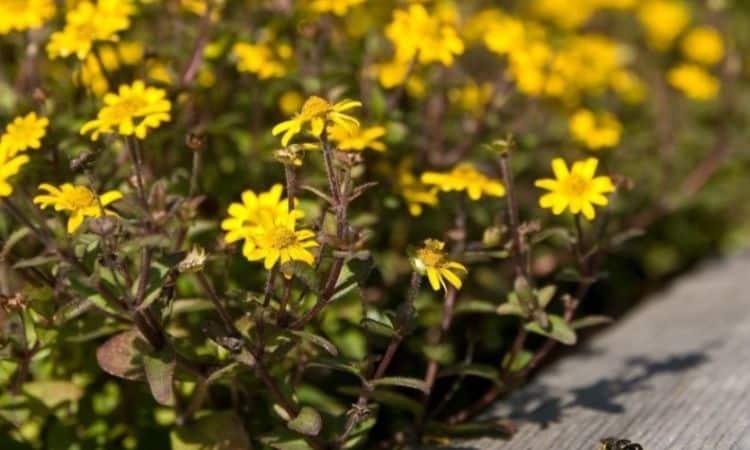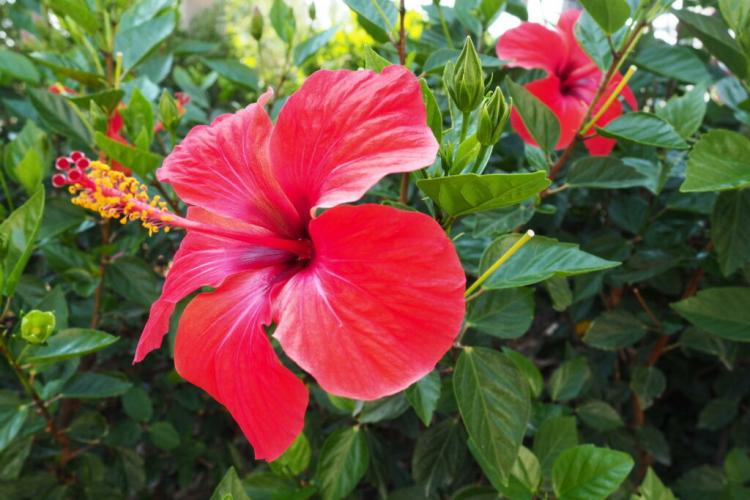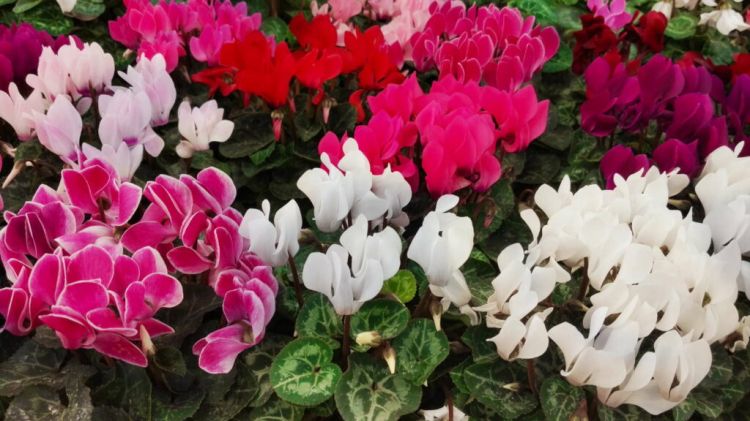Panicle Hydrangea: Planting, Propagating & Best Varieties
What is the perfect location for panicle hydrangeas? What do you have to consider when fertilizing panicle hydrangeas? Everything about planting and caring for the hydrangea can be found here.
Hydrangeas exist in many different types and varieties and have become an indispensable part of our gardens. This is also confirmed by its name – “hydrangea” comes from the Latin word hortensias, which translates as “belonging to the garden”. The panicle hydrangea is one of the most robust hydrangea species.
Panicle hydrangea: flowering period, origin, and characteristics
Table of Contents
The panicle hydrangea ( Hydrangea paniculata ) belongs to the genus of hydrangeas ( Hydrangea ) in the hydrangea family (Hydrangeaceae). Like most hydrangea species, it is native to East Asia. Their wild form is common in China, Japan, and Russia. Panicle hydrangeas grow as an upright shrub and become around 2 to 4 meters high and 2 to 3 meters wide when they are old.
On the gray-brown branches, there are oval to egg-shaped leaves about 6 centimeters wide and up to 15 centimeters long. They are intensely green in color and taper to a point. The leaf margin is finely serrated. In autumn the foliage often turns green-yellow. The flowering time of the panicle hydrangea is between July and October. This makes it one of the late-blooming hydrangea species. The cone-shaped panicles of panicle hydrangeas are composed of sterile flowers each with 3 to 4 decorative, round sepals and fine, rather inconspicuous, fertile flowers.

Depending on the variety, panicle hydrangeas bloom in pink, pink, or white to creamy white, combined with light green. Towards the end of flowering, the white varieties also often turn pink. The hydrangea blue known from garden hydrangeas (Hydrangea macrophylla ) does not exist in panicle hydrangeas. You may also have wondered whether panicle hydrangeas are bee-friendly.
Most hydrangea species and varieties are dominated by sterile flowers. Bees and other insects find no food in these. But some panicle hydrangea varieties have a higher proportion of nectar-rich, fragrant and fertile flowers and are therefore bee-friendly. These varieties include, for example, ‘Tardiva’ and ‘Kyushu’.
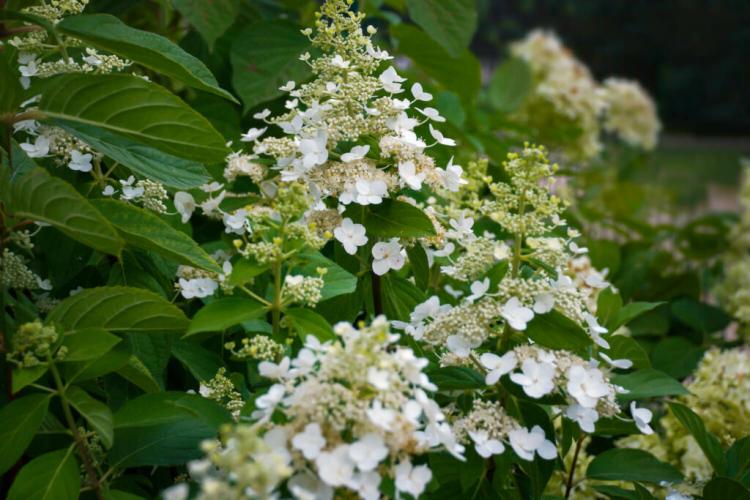
Panicle hydrangea varieties
In addition to the proportion of fertile and sterile flowers, the various panicle hydrangea varieties differ primarily in their height and color. In addition, some varieties are well suited as standard stems.
You might so like: Hamamelis: Everything To Grow And Care Of Witch Hazels Deciduous Shrub
Hardy panicle hydrangea varieties
Panicle hydrangea ‘Limelight’: panicles up to 30 cm long; lime green flower color, changes from white to pale pink in the course of the flower; Flowering period: July – October; Height: up to 2 m; particularly frost hardy and robust.
Panicle hydrangea ‘Vanille Fraise’: At the beginning of the flowering period, the flowers appear in cream to vanilla white with a hint of pink, during the summer the pink becomes more and more intense until the flowers shine in a deep purple-red in late autumn; red-brown colored shoots; Flowering period: July – November; Height: up to 2 m; hardy and robust; also survive drier phases.
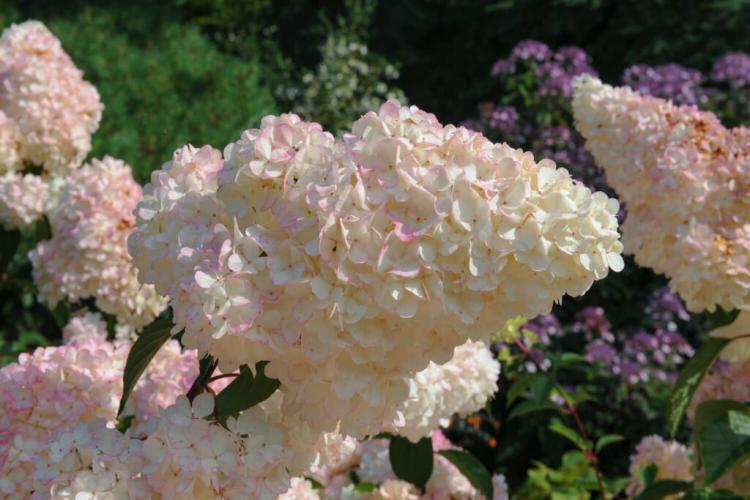
Panicle hydrangea ‘Phantom’: rarer variety; forms panicles over 30 cm in size; they appear in the beginning in white to creamy yellow and turn pink to red in autumn; Flowering period: August – October; Height: up to 2.5 m; particularly hardy.
Panicle hydrangea ‘Diamant Rouge’: Particularly large panicles of flowers (35 – 40 cm); at the beginning of flowering they shine in pure white, color changes from pink to an intense raspberry red; the foliage is fresh green at first and turns orange in autumn; Flowering period: July – September; Height: up to 2 m; hardy.
Panicle hydrangea ‘Tardiva’: Late variety; loose, fragrant panicles of flowers in white-pink; bloom well into October and provide food for insects when most of the other flowers have already faded; dark green leaf; Flowering period: July – October; Height: 2.5 – 3.5 m; well hardy and undemanding.
Panicle hydrangea ‘Kyushu’: Creamy white flower panicles; the pleasant scent of fertile flowers, which attracts many butterflies; Flowering period: July – September; Height: 2 m; very frost hardy.
Panicle hydrangeas as standard stem: Suitable varieties
In addition to the panicle hydrangea variety ‘Limelight’, the varieties ‘Levana’ and ‘Wim’s Red’ are also suitable as standard stems. They are also hardy. ‘Levana’ forms very large, pure white inflorescences of up to 50 centimeters in length and reaches heights of 3 to 5 meters. They bloom from June to September or October. The green leaves of this panicle hydrangea contrast nicely with the bright flowers.
You might so like: Cyclamen Species: Variety Between Bedding And Houseplant
The ‘Wim’s Red’ variety shows white panicles of flowers as early as the beginning of June, which open after a time. In the course of the flowering period, their color changes from light pink to intense red. This gives the impression that the flower panicles are blooming in multiple colors. ‘Wim’s Red’ grows up to 2.5 meters high and flowers until September.

Panicle hydrangeas in a tub: Small varieties for the pot
Small panicle hydrangea varieties are suitable for planting in pots on the balcony or terrace. The lime green blooming dwarf panicle hydrangea ‘Mojito’ reaches a height of 90 to 100 centimeters. The white blooming dwarf panicle hydrangea ‘Little Spooky’ is only about 30 to 50 centimeters high and the white-greenish to pink-red blooming dwarf panicle hydrangea ‘Little Fraise’ is 60 to 80 centimeters.
Planting rose hydrangea: location, timing, and procedure
Panicle hydrangeas prefer a sunny to partially shaded location protected from the wind in the garden or on the balcony. They can be planted all year round, but ideally, the plants will get into the soil in spring. The soil should be fresh, well-drained, rich in humus and nutrients, and have a pH value between 5.5 and 6 (slightly acidic).
Nutrient-poor, sandy garden soils should be enriched with a little compost or high-quality potting before planting. In contrast, so much sand should be added to soils with low permeability that it makes up at least a third of the volume of the soil in the planting hole. Mix the substrate well and then dig a sufficiently large planting hole. Use your hands or a spade to gently break the planting ball of the panicle hydrangea to encourage the roots to branch out and place it in the planting hole. Fill the hole with substrate and press down firmly.
Pour generously. With a layer of mulch made of leaves or bark, you can ensure that the moisture stays in the soil longer when watering and does not evaporate as quickly. Especially when planting in the warm season, it must be watered regularly afterward.
Tip: You can model a circular pouring edge around the hydrangea from excess garden soil. Always fill the pouring rim with water when pouring so that it can seep away in a targeted manner and does not run off in an uncontrolled manner above ground.
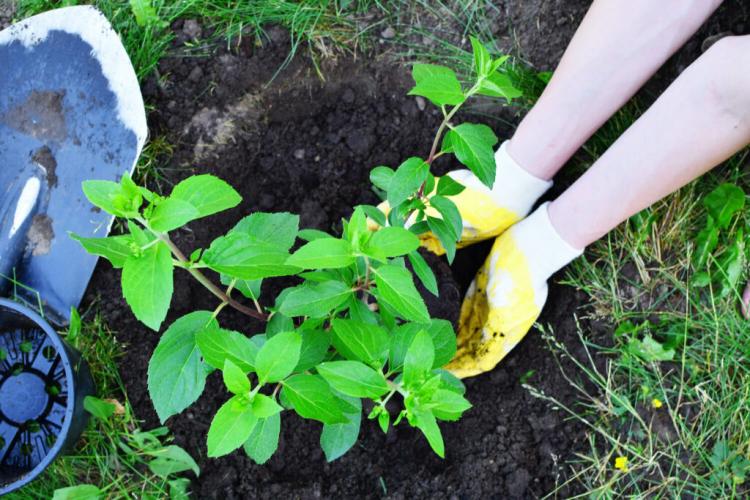
If you want to place the panicle hydrangea in a planter on the terrace or balcony, you should make sure that the bottom of the container has a drainage hole when choosing a suitable container. This ensures that excess irrigation water can run off and that no waterlogging occurs. A peat-free potting soil such as our Plantura organic potting soil is very suitable as a substrate. With its balanced nutrient composition, it offers your panicle hydrangeas the ideal conditions for vigorous growth and lush blooms.
Maintain panicle hydrangea
Panicle hydrangeas are quite robust and undemanding compared to other hydrangea species. In addition to fertilizing and watering, annual pruning is recommended if you want to promote beautiful growth with lots of flowers or if you don’t have a lot of space. You can find out how to cut panicle hydrangeas in our special article.
Fertilize panicle hydrangeas
With potted hydrangeas, in particular, the nutrient supply should be replenished annually employing spring fertilization. This gives the plant a good start into the growing season. Further fertilization can be carried out in summer. With this optimal supply of nutrients, nothing stands in the way of rich flowering. Choose a primarily organic fertilizer for panicle hydrangeas, such as our Plantura organic hydrangea fertilizer with long-term effects. Typical deficiency symptoms and diseases of hydrangeas are prevented by organic fertilizer. Work it lightly into the soil to increase its effectiveness. You can also put it under the layer of mulch so that it is well moistened and starts working quickly.
Caution: Hydrangeas have rather shallow roots, so you shouldn’t dig too hard underneath them or loosen the soil so as not to damage the roots.
Water panicle hydrangeas
Unlike most hydrangea species, panicle hydrangeas can survive drier periods. However, in order not to expose them to unnecessary stress, you should always keep the soil around the plants moderately moist. Water regularly and make sure that the root ball never dries out completely. It is advisable to water the plants from below. This prevents water from getting on the leaves and flowers.
Propagate panicle hydrangeas
Panicle hydrangeas can be propagated from cuttings. To do this, cut off about 10 to 15 centimeters long, healthy, and only slightly woody shoot tips without flower buds from the hydrangea between June and July. Remove all leaves except for the upper pair of leaves and place them in cultivation containers filled with substrate.
A peat-free seed-soil such as our Plantura organic herb & seed-soil is ideal as a substrate. It is advisable to mix the seed compost with sand or perlite to increase the permeability and to achieve better-rooting success. The cuttings are about 2 to 3 centimeters deep into the soil and lightly pressed. Keep the substrate continuously moist and make sure that the water reaches the cuttings as low as possible. In a bright place without direct sunlight and at a temperature of around 15 ° C, they take root and grow into new hydrangea plants.
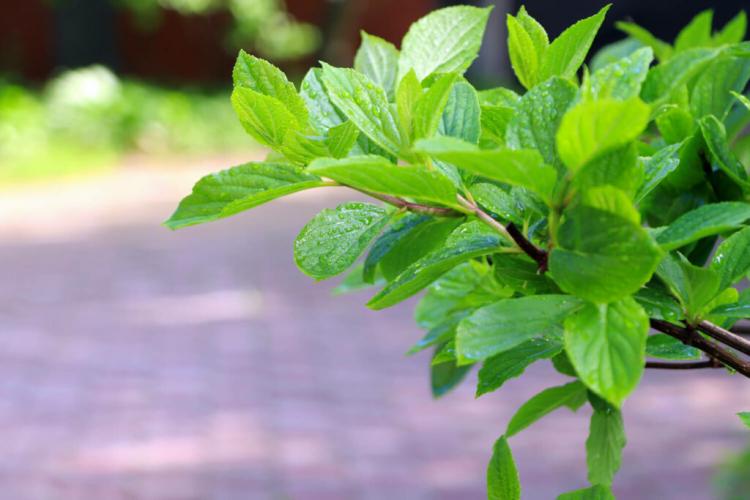
Hibernate panicle hydrangeas
Panicle hydrangeas are hardy. When buying your panicle hydrangeas, make sure to choose robust plants from specialist retailers that have been well hardened. In addition, you should always use organic or mainly organic fertilizers. Mineral fertilizers endanger the frost hardiness of plants, especially if they are used too late in the year.
In the case of panicle hydrangeas in the bed, shallow roots can be covered with a light layer of mulch to protect them from frost damage. Hydrangeas planted in pots should be wrapped in jute sacks, garden fleece, or bubble wrap in winter to be on the safe side. With older panicle hydrangeas, protection in the lower area is sufficient, young plants should be completely covered to be on the safe side.
Alternatively, panicle hydrangeas can also be placed in light, protected winter quarters in winter. However, do not overwinter panicle hydrangeas too warm. A long-lasting cold stimulus is necessary so that the plant can successfully sprout again in the next growing season and form flowers.
Tip: If Hydrangea paniculata is overwintered indoors, it should be slowly accustomed to the light again in spring. Because if it is put outside from one day to the next and exposed to intense solar radiation, it can quickly suffer from sunburn.
If you would like to find out which bee-friendly shrubs are still available for the garden, we recommend our special article about the 15 most beautiful shrubs for bees.
